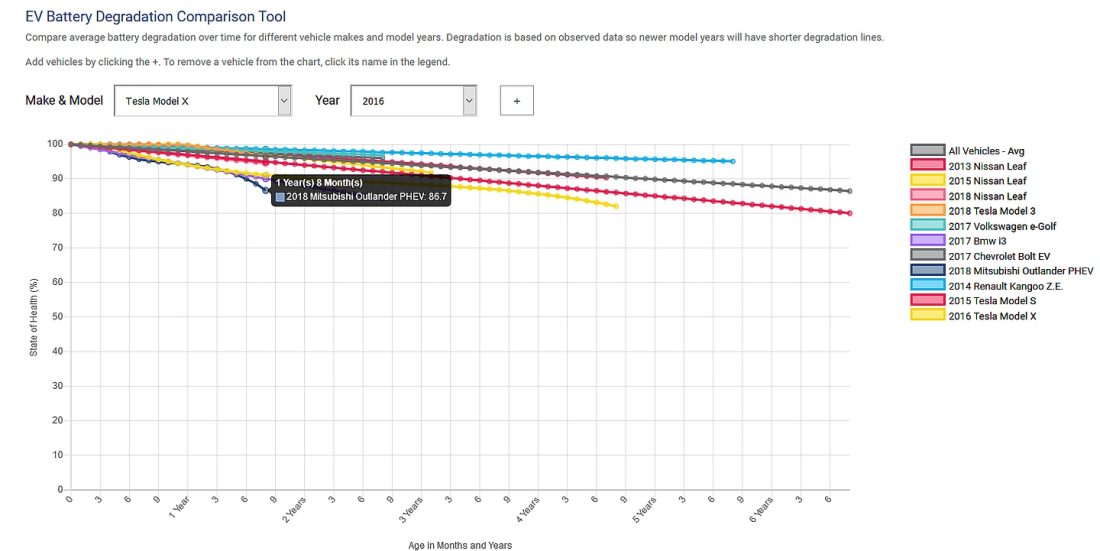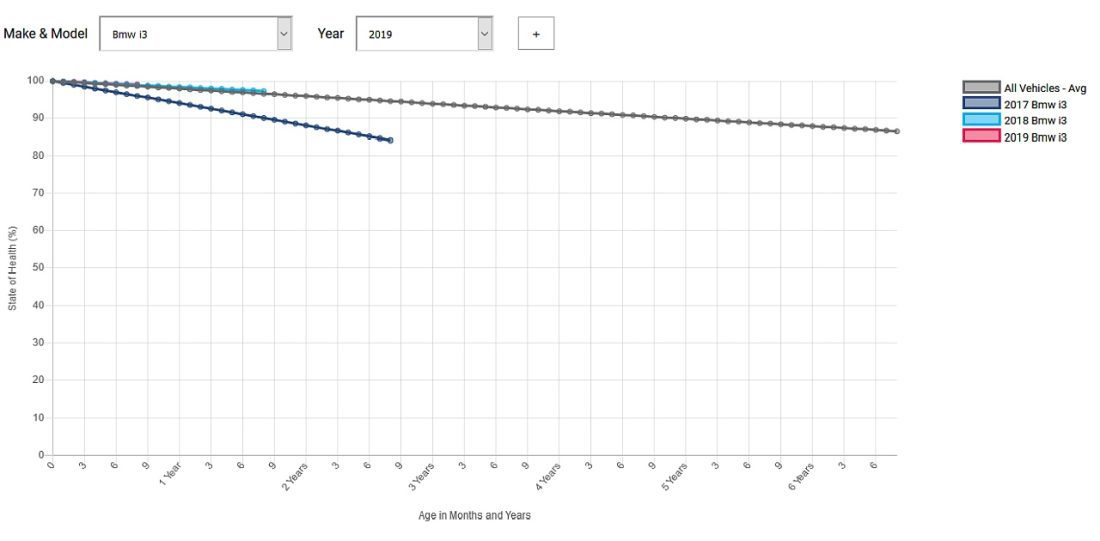
What is the degradation of the battery in electric vehicles? Geotab: average 2,3 percent per year • ELECTRICAL
Geotab has put together an interesting report on the decline in battery capacity in electric vehicles. This shows that degradation is progressing at a rate of about 2,3 percent per year. And that it is better to buy cars with actively cooled batteries, because those with passive cooling can age faster.
Loss of battery capacity in electric vehicles
Table of contents
- Loss of battery capacity in electric vehicles
- Conclusions from the experiment?
The data presented in the charts is based on 6 electric vehicles and plug-in hybrids used by individuals and companies. Geotab boasts that the study covers 300 models from different vintages and different manufacturers - the collected information covers a total of 21 million days of data.
It's worth noting that the graph lines are straight from the start. They do not show the first sharp drop in battery capacity, which usually lasts up to 3 months and causes a drop from about 102-103 percent to 99-100 percent. This is the period during which some of the lithium ions are captured by the graphite electrode and passivation layer (SEI).
> Charge electric vehicles in 10 minutes. and longer battery life thanks to ... heating. Tesla had it for two years, scientists have figured it out now
This is because the trend lines are shown on the charts (source):

What is the conclusion? The average for all vehicles tested is 89,9 percent of original power after 5 years of use.. Thus, a car with a range of 300 kilometers will initially lose about 30 kilometers in five years - and will offer almost 270 kilometers on a single charge. If we buy a Nissan Leaf, degradation may be faster, while in a Volkswagen e-Golf it will be slower.
Interestingly, both models have a passively cooled battery.
> How are batteries in electric vehicles cooled? [MODEL LIST]
We saw the biggest drop in the Mitsubishi Outlander PHEV (2018). After 1 year and 8 months, the cars offered only 86,7% of the original capacity. The BMW i3 (2017) also dropped quite a bit in price, which after 2 years and 8 months offered only 84,2 percent of its original capacity. Something has probably already been fixed in later years:

We do not know how these cars are loaded, how they work and how the individual models are presented. Judging by the progress of the graph most measurements come from Tesla Model S, Nissan LEAFs and VW e-Golf. We are under the impression that this data is not completely representative of all models, but it is better than nothing.
Conclusions from the experiment?
The most important finding is probably the recommendation that buy a car with a battery that we can afford. The larger the battery, the less often we will have to charge it, and the loss of kilometers will harm us less. Do not worry about the fact that in the city "it makes no sense to carry a large battery with you." This makes sense: instead of charging every three days, we can connect to a charging point once a week - exactly when we are doing big purchases.
The rest of the recommendations are of a more general nature and are also present in the Geotab article (read HERE):
- we will use batteries in the range of 20-80 percent,
- do not leave the car with a discharged or fully charged battery for a long time,
- if possible, charge the car from half-speed or slow devices (ordinary 230 V socket); fast charging accelerates capacity loss.
But, of course, let's not go crazy either: the car is for us, not us for it. We will use it in the way that is most convenient for us.
Note from the editors of www.elektrowoz.pl: the above recommendations are intended for reasonable people who would like to enjoy their cars and electronic devices for as long as possible. For us, convenience and uninterrupted operation are more important, therefore we charge all devices with lithium-ion batteries to the maximum and discharge them well. We also do this for research purposes: if something starts to break, we want to know about it before prudent users.
The topic was suggested by two readers: lotnik1976 and SpajDer SpajDer. Thanks!
This may interest you:
